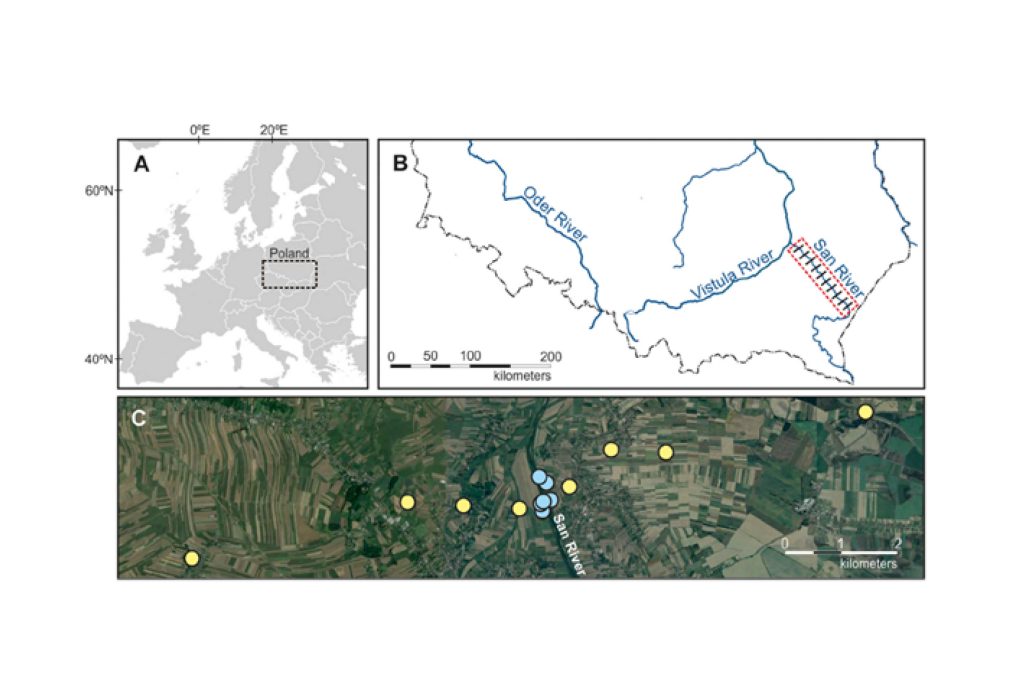Wraz z zespołem badaczy z Uniwersytetu Jagiellońskiego przeprowadzono analizę uwarunkowań ekologicznych i środowiskowych roślin dolin rzecznych (river corridor plants – RCP). Nasze badania wykazały, że pokrycie gatunków RCP było w miejscach charakteryzujących się wyższą zawartością wymiennego potasu (K) w glebie. Na stanowiskach położonych wzdłuż antropogenicznych liniowych elementów krajobrazu spodziewane pokrycie gatunków RCP było najwyższe na poletkach o wysokiej zawartości wymiennego K w glebie i jednocześnie wysokim pH gleby. Takie wyniki sugerują, że rośliny „korytarzowe” potrzebują dobrych warunków do szybkiego rozwoju systemu korzeniowego aby móc reagować na szybko zmieniające się warunki nadmiaru wody lub jej niedostatku.

Abstract
The phenomenon that some vascular plant species grow mainly or exclusively in the large river valleys of Central Europe constitutes a long-standing distribution puzzle. In our study, we focused on determining which physicochemical properties of soil affect the distribution of river corridor plant (RCP) species. Research that included RCP coverage, the physicochemical properties of soil as well as several topographic and spatial variables were conducted in 10 transects perpendicular to the San River (SE Poland). The sampled plots were located both in close proximity to the river, where the greatest number of RCP populations are concentrated, and along anthropogenic linear landscape elements which have proven to be important for RCP occurrence in areas located away from the riverbed. Spearman rank correlation matrices were constructed to observe the general relationships between particular variables and Boosted Regression Tree models were used for explaining RCP coverage. Our study indicated that in the case of plots located in proximity to the river, the expected coverage of RCP species was highest in plots characterized by a higher soil exchangeable potassium (K) content, as well as in those located closer to the San River and at lower altitudes. In plots situated along anthropogenic linear landscape elements, the expected coverage of RCPs was highest in plots with a high soil exchangeable K content and in those with a high soil pH. The analyses clearly showed that the physicochemical properties of soils indeed affect.
Nobis A., Chmołowska D., Szymura T., Nowak A., Nobis M. 2022. Towards a better understanding of linear distribution in river valleys: the abundance of river corridor plants is linked to soil exchangeable potassium and pH. Science of the Total Environment 851: e158292 doi:org/10.1016/j.scitotenv.2022.158292
